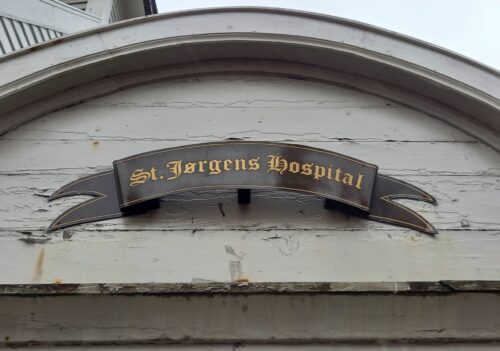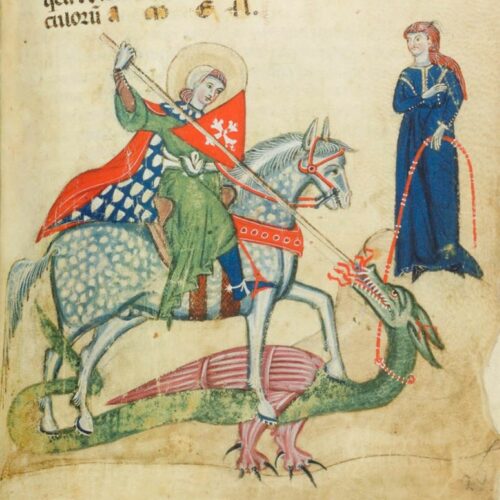St. George and the dragon – the name St. Jørgen’s Hospital
The first source that uses the name St. Jørgen to refer to the hospital at Nonneseter convent is a will dated 1438. St. Jørgen is the Norwegian name for St. George, who fought the dragon to free a princess. Legend has it that the dragon demanded a young girl to eat each day, and the king’s only daughter was eventually chosen. With God’s help, George managed to capture the dragon and set the princess free. The king and his people converted to Christianity, and George killed the dragon. For the church, the parable symbolises the church’s victory over evil.
From the middle of the 14th century, St. George/Jørgen emerged as the patron saint of people affected by leprosy in the Nordic countries. The disease was the evil dragon that needed to be fought. Since leprosy could not be fought using ordinary means, people put their trust in God, represented by St. George. There were St. Jørgen’s hospitals all across the Nordic countries, where they have also been known as St. Jørgens hus. In the Middle Ages, there was also a leprosy hospital in Oslo dedicated to St. Jørgen. Denmark had more than 30 such hospitals. Other countries had other patron saints of leprosy, including St. Lazarus, St. James and St. Leonard. St. George later also came to be regarded as the patron saint of people with other illnesses and afflictions.

Photo: Bergen City Museum.

Biblioteca Civica, Verona.



